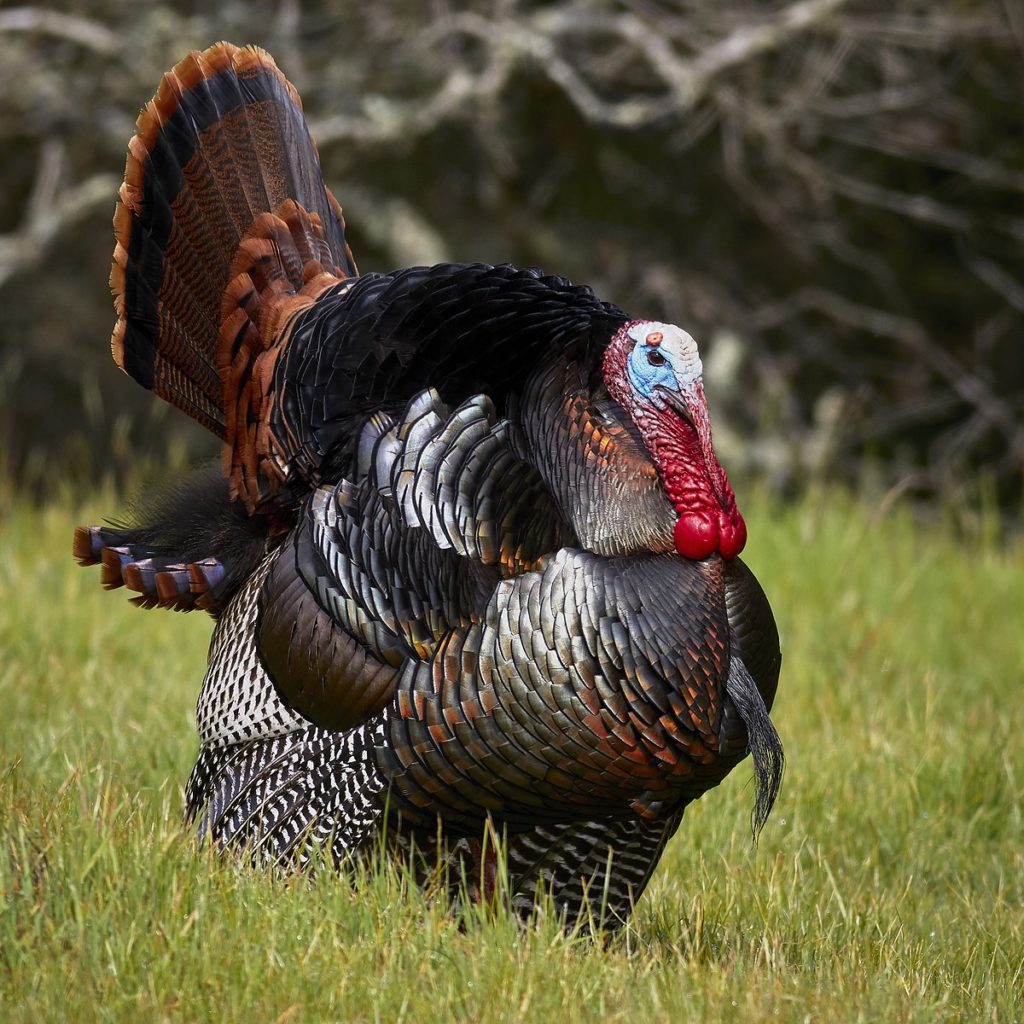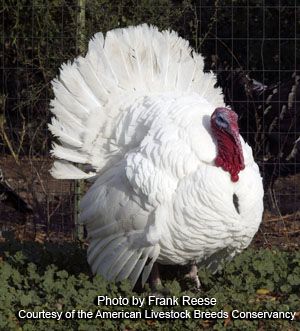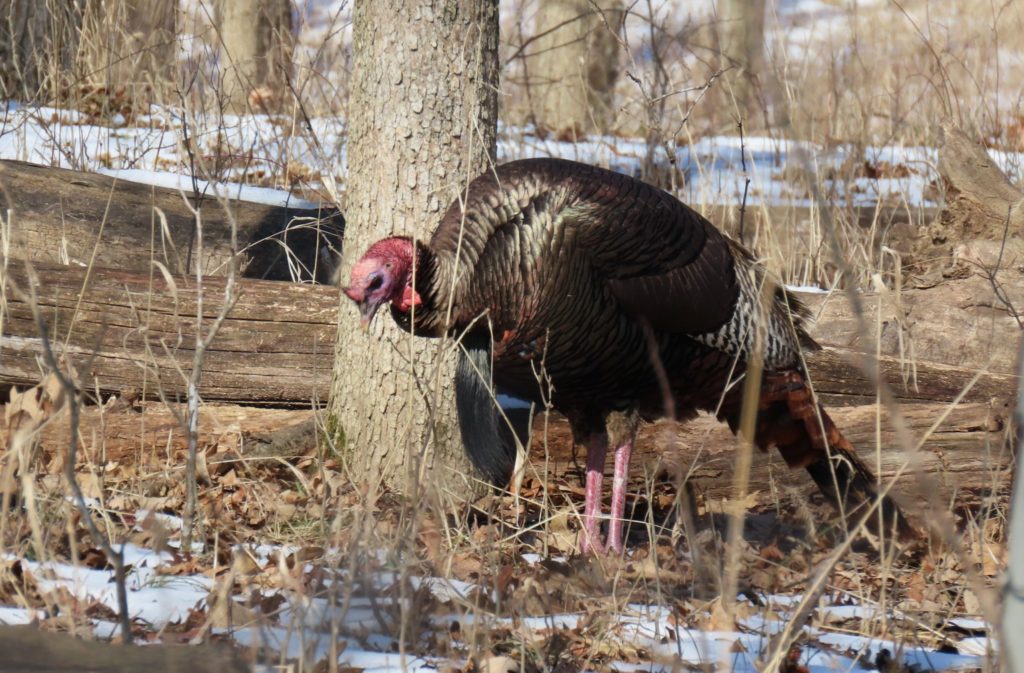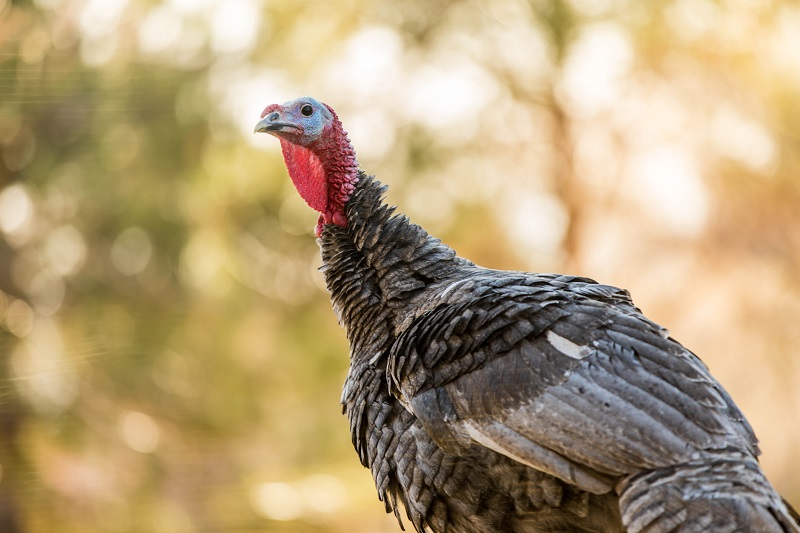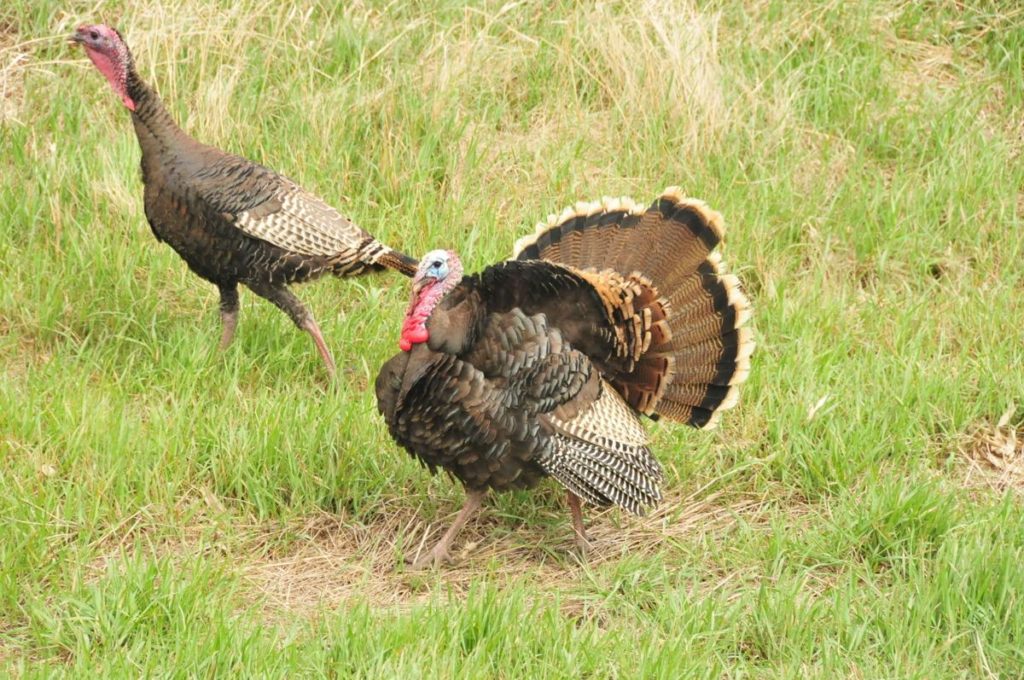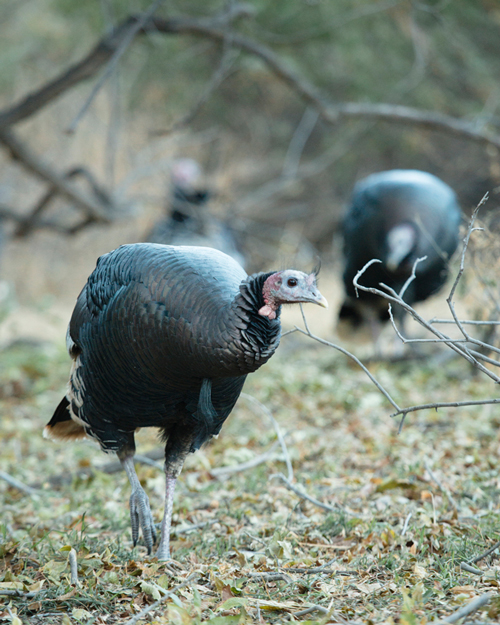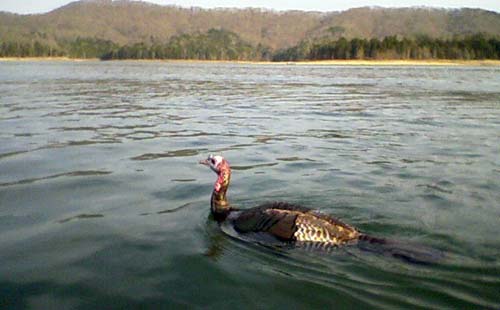by Doug Becker

Turkeys! Of all the birds in North America, is there anyone, young or old, who doesn’t know what a turkey is? They are native to all 48 states, and much of Mexico. More recently, they have become common to our 49th state of Hawaii.
Wild Turkeys have been around for a long time. They originated some 11 million years ago and have led an honored and colorful history. Native Americans, early settlers, and colonists celebrated with the large and sumptuous Wild Turkey as the main event.

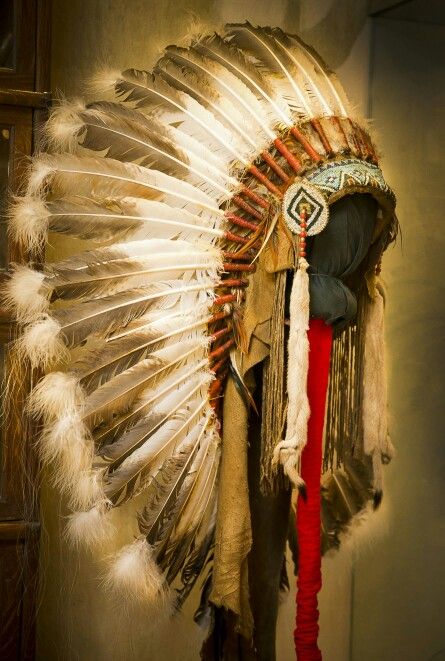
Today, the main event continues. The National Turkey Federation estimates 46 million domestic turkeys are eaten every Thanksgiving, 22 million each Christmas, and 19 million each Easter. Now, huge quantities of frozen turkeys are given out to families in need while Covid 19 ravages our country. I think we owe lots of gratitude to these wonderful game birds. Ben Franklin proposed making the Wild Turkey our national bird. Historically, I can see why. The Wild Turkey is truly an American bird.
So, now we have Wild Turkeys and Domesticated turkeys. What’s the difference? Not much. Domesticated turkeys are confined, well fed, and bred to be all white so after being plucked their pin feathers don’t show at the marketplace like the black pin feathers of dark turkeys. With more food and less exercise, the white domesticated turkey became bigger and more tender at the table. The average weight of a white farmed turkey is around 20 pounds, although the biggest came in at a whopping 86 pounds. Yeow! How would you like to see THAT in the center of your holiday table?
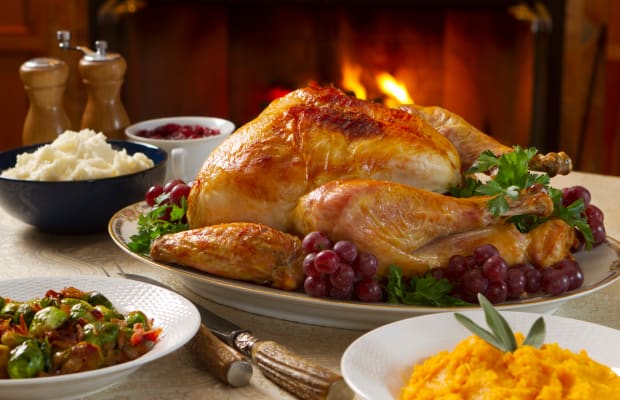
Wild Turkeys are smaller, leaner, have longer legs and smaller breasts. Their meat is dark and richer with a more intense flavor and firmer texture. Because of widespread hunting, changes in forestry and farming in the 19th century, Wild Turkey populations came to a serious low. Farmers released many white domesticated turkeys into the wild to help increase the overall turkey populations. Problem was all the white farm turkeys died in the wild because they had no skills to survive. Fortunately, better conservation rules came into effect and Wild Turkey populations exploded. Today, Wild Turkeys are back and plentiful. Second only to deer, Wild Turkeys are the most hunted game in the United States!
Technically, there are six types, or subspecies of Wild Turkeys. The Eastern, Osceola, Gould’s, Merriam’s, Rio Grande, and the Ocellated Wild Turkey. All are dark but vary in coloration. Being year-round ground foragers, turkeys seek out a mixture of forest and open grasslands to nest and feed. Because these feeding areas vary across our diverse country, so does their diet, behavior, and coloration.
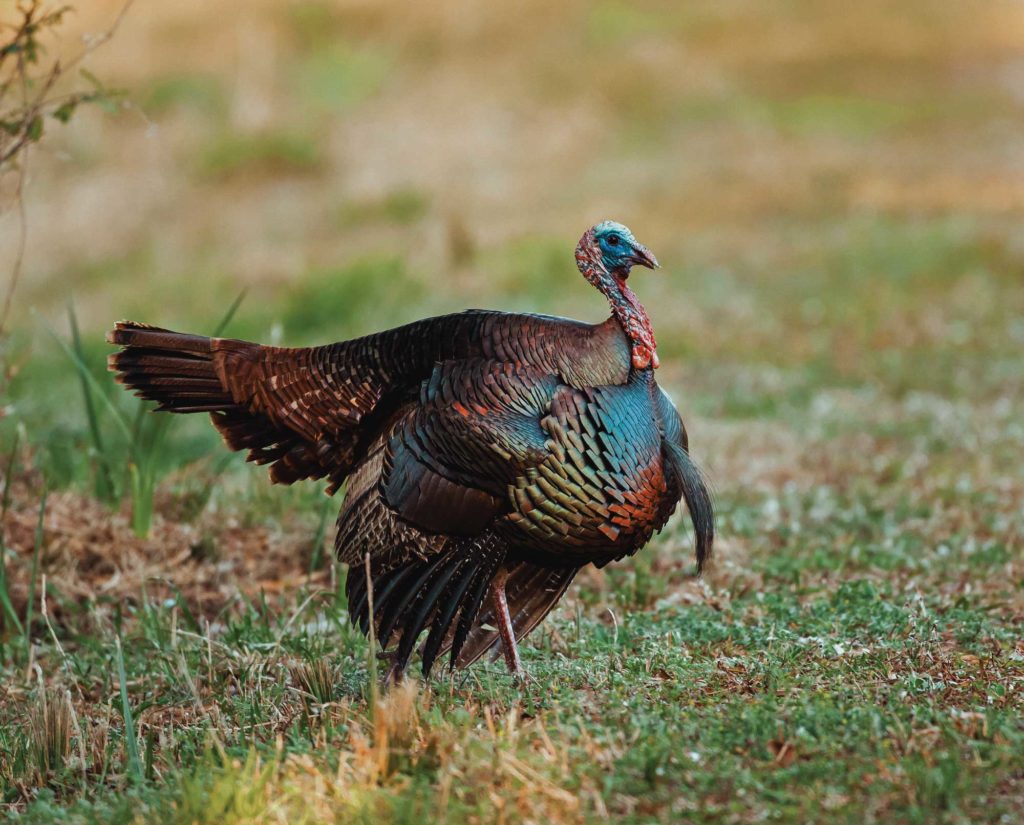
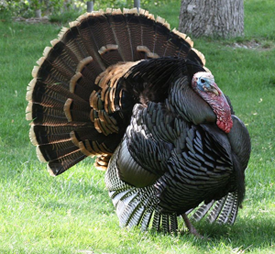
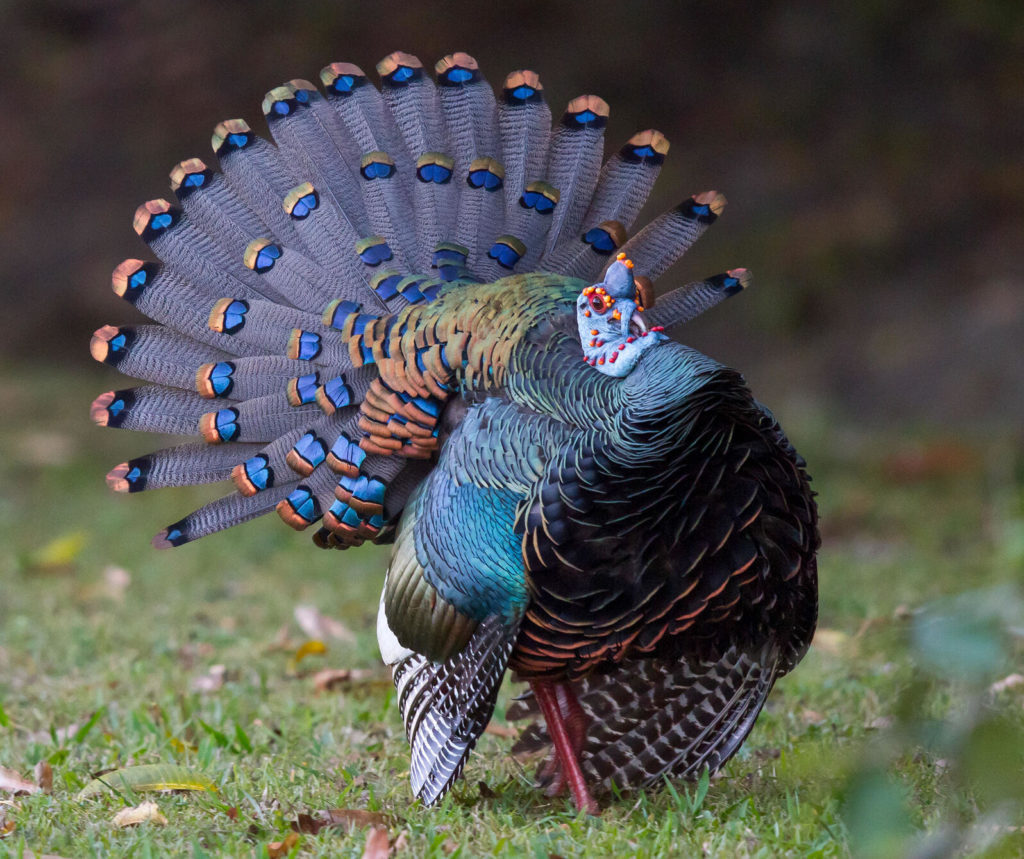
When on display for the hens, the male gobbler is large and practically round. Remember, these guys weigh in at around 20 pounds, are 45 inches in length, and have a wingspan of over 4 1/2 feet! Their overall color is dark brown or black with a bronze-green iridescence to most of their plumage. Their wings are dark but are stripped in bright-white bars. The rump and signature fanned-tail-feathers are outlined in tan or white, and the bare skin of their head and neck goes from red to blue to gray.

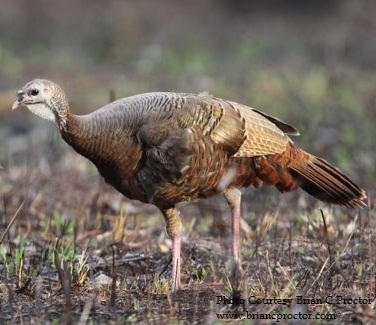
People frequently ask what are those red things that hang down from the turkey’s beak and neck. Well, the red thing from his beak is called a “snood”, and the red thing hanging under his neck is called a “wattle”. Together, they’re called caruncles, and both males and females have them. Though the caruncles are usually quite pale, the male’s snood and wattle become engorged with blood during mating season. The snood and wattle then turn bright red and blue. The hens, which are much smaller than the males, seem to enjoy the advances of the huge, puffed up, round fantailed male gobblers slowly strutting around with enlarged snoods and wattles while looking over the flock. He IS a spectacle to behold!
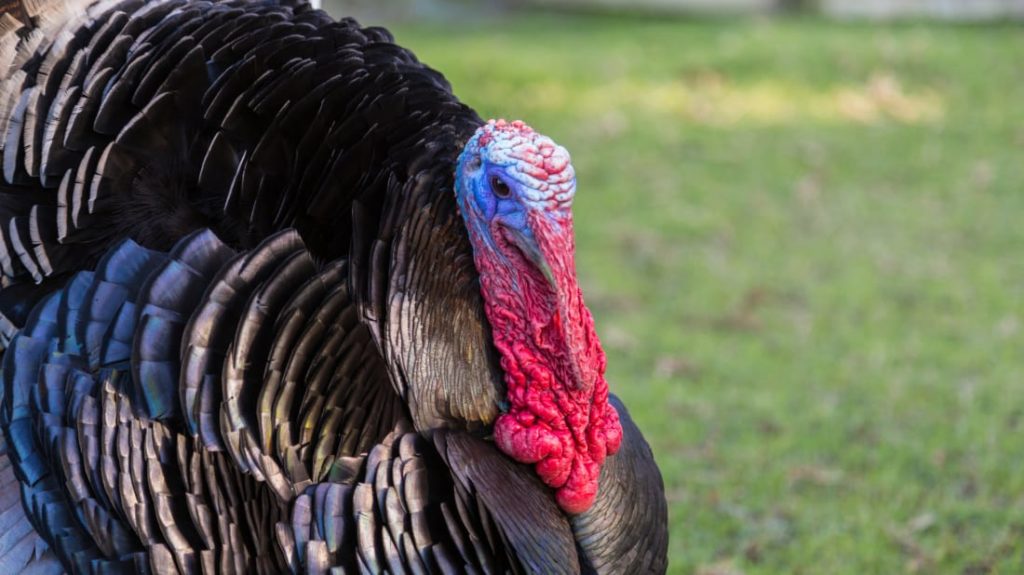
Wild Turkeys nest on the ground. The female selects the location at the base of a tree, or under some brush, or even out in a hayfield. She scratches a depression in the ground that is about 1 inch deep, 8-11 inches wide, and 9-13 inches long. This depression is filled with dead leaves, or grasses from the immediate area. She lays a single clutch of 4-17 eggs each year with an incubation period of 25-31 days. Nesting time is just 1 day before the chicks are set free to start foraging on their own. Meanwhile, the male has little involvement and is out looking at other hens.


Turkeys gather in flocks. Young birds flock together, and males will group up together. Most of their time is spent on the ground foraging. When danger is present, females tend to fly up into the trees, while males usually run for safety. At night, Wild Turkeys fly into the lower branches of trees, then work their way from branch to branch until reaching near the top. Again, turkeys prefer to flock together, even when roosting at night. In springtime, male turkeys will join up in a clearing to perform courtship displays with lots of gobbling that can be heard for long distances. Frequently seen small flocks may be 10-20 birds, but flocks of Wild Turkeys may be as great as 200 birds.
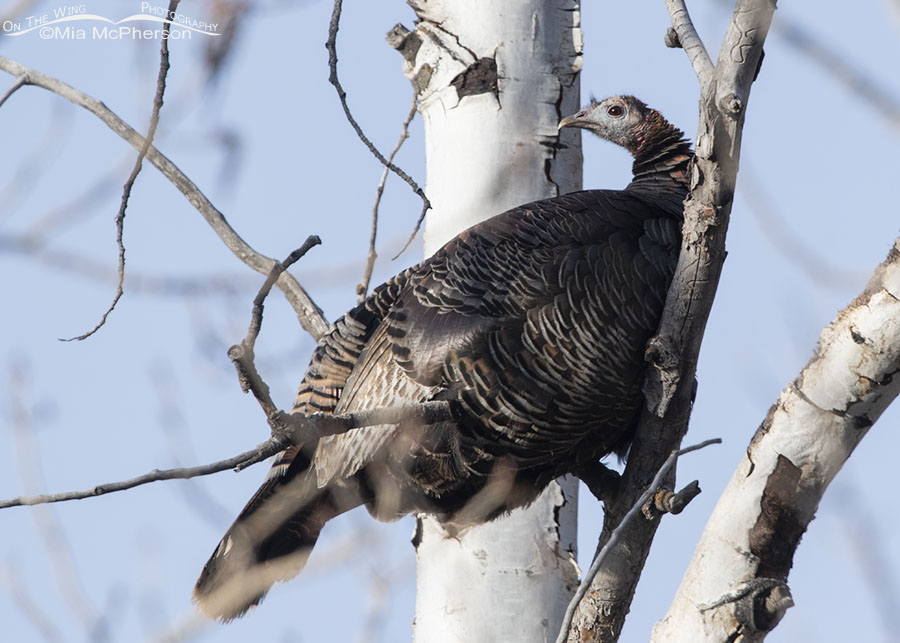


Wild Turkeys are out there for all of us to see and enjoy. Look for them in any field, along the roads, big parks … that’s the best reason to keep your binoculars in the car all of the time! They’ll be in small flocks eating anything from seeds of all kinds, green leaves and plants, nuts, berries, and fruit, bugs and insects, or salamanders and snails. Wild Turkeys can run 12 miles per hour and are very adept swimmers. If your yard is large and near the woods and has some water, they may find your feeders. Corn and seeds can be tossed across the yard, but you may get more visitors than just Wild Turkeys! These are American native birds and are unique. Not long ago, my wife and I were driving through a gated neighborhood on the edge of town when we suddenly had a flock of 18 Wild Turkeys walking down the sidewalk next to us. Fabulous! Ya know, ya gotta love our Wild Turkeys! See ya out there!
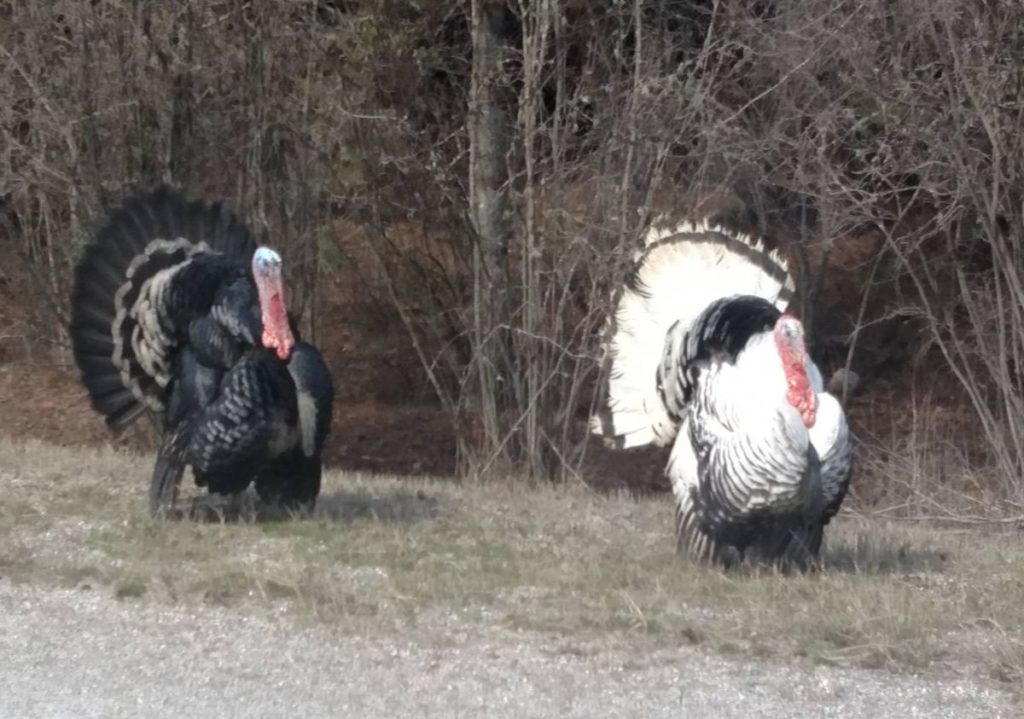

Tom Glines, Minnesota’s senior regional director for the National Wild Turkey Federation, said the wild turkey has four distinct color variations from what is considered the usual plumage — smoke phase, erythritic or red phase, melanistic or black phase, and true albinos, which are pure white with pink eyes. Although these color variations are uncommon, the Minneapolis Star-Tribune reports, the smoke phase is the most frequently seen. Recessive genes or mutations account for the color abnormalities.

